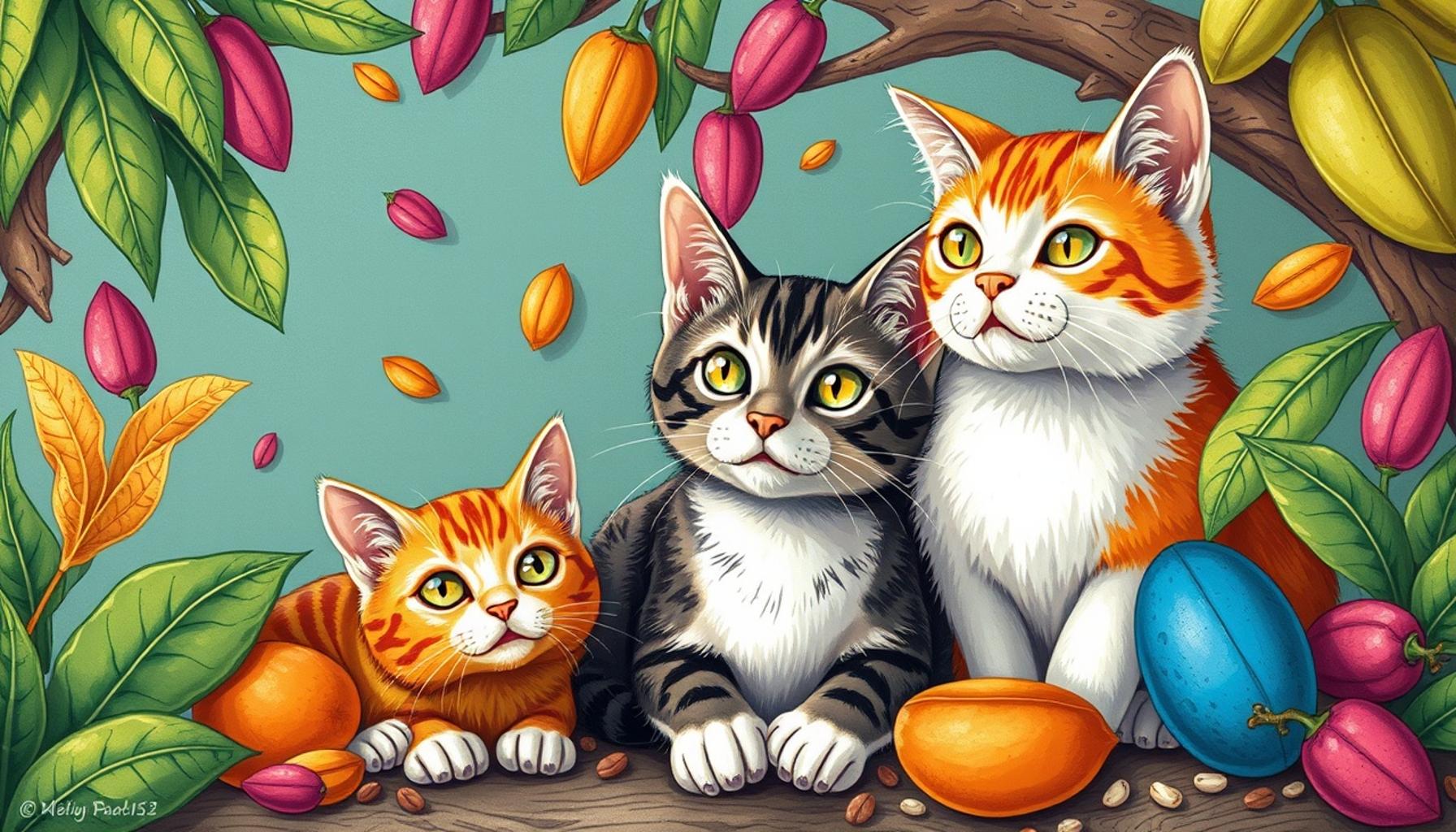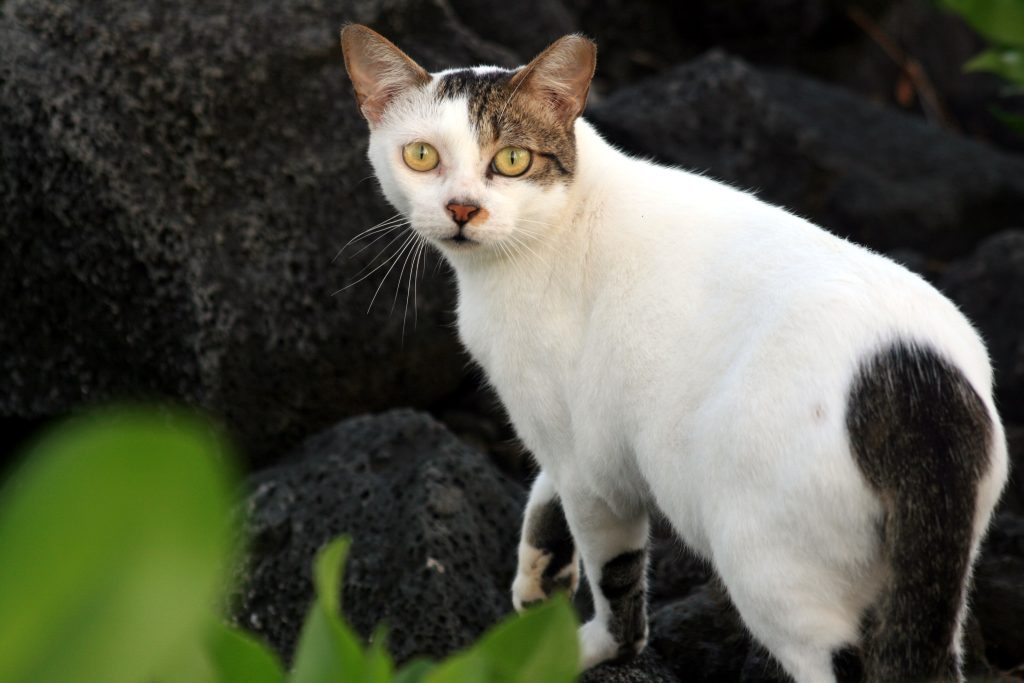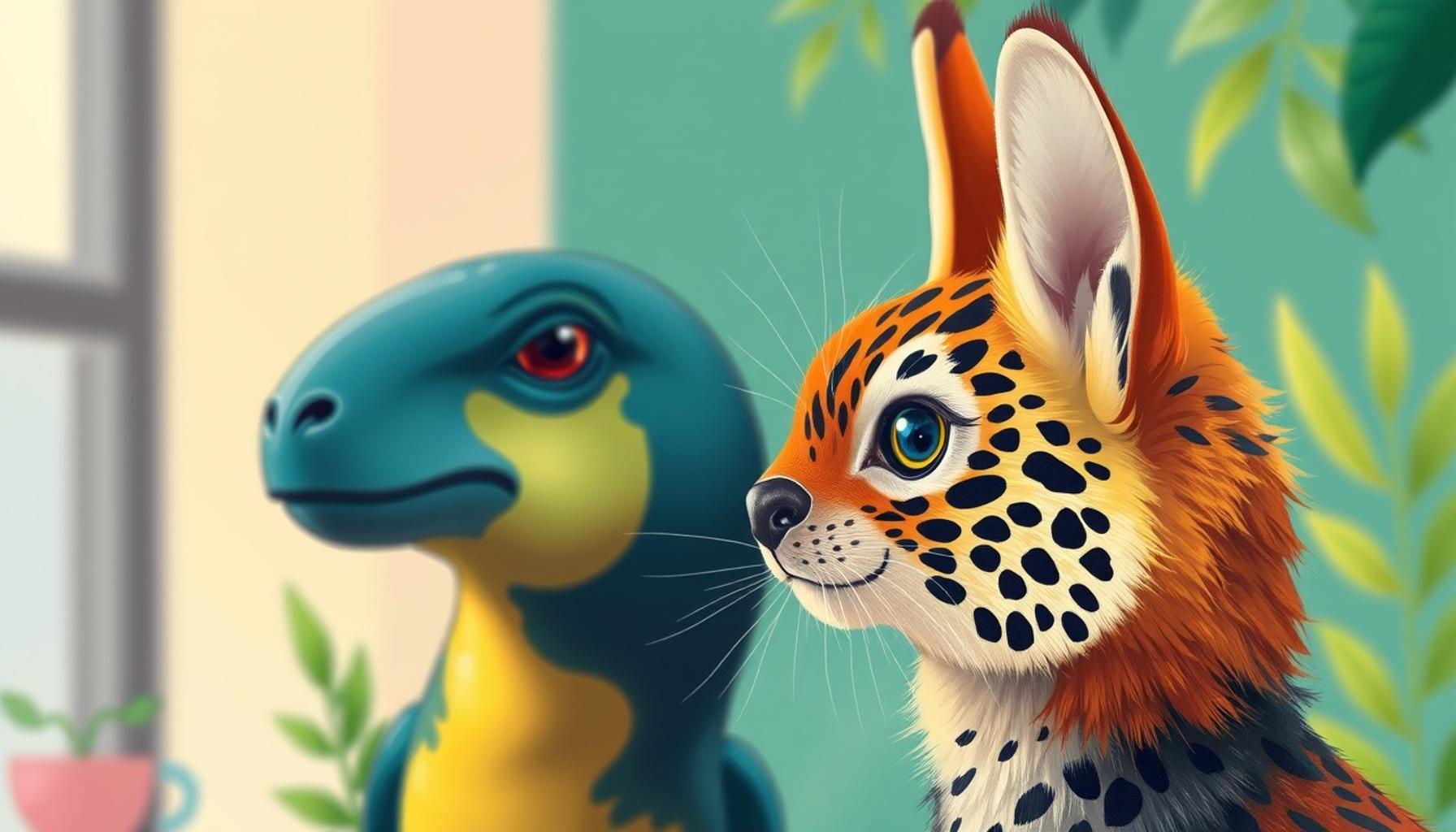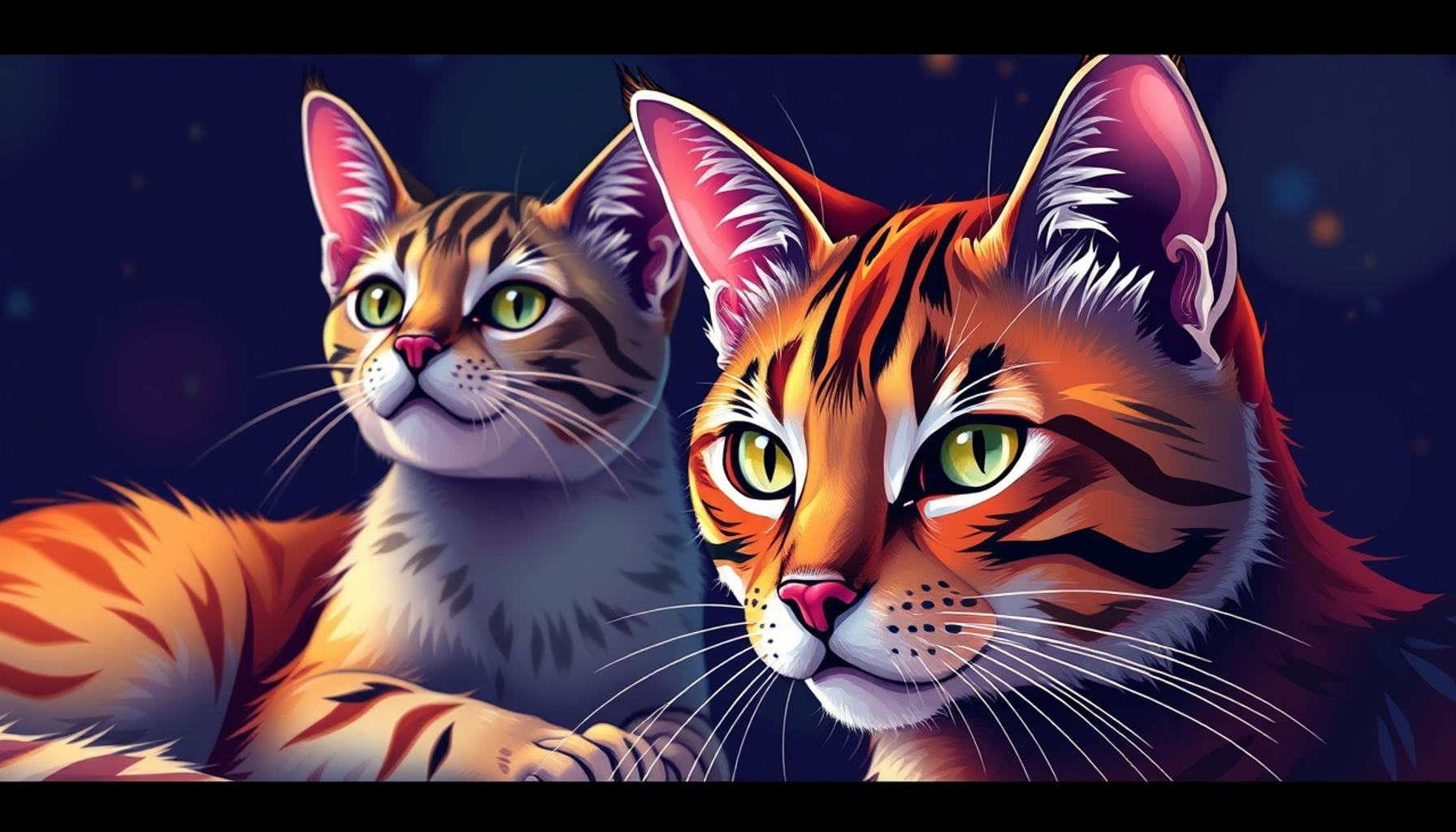How Hunting Behavior is Manifested in Domestic Cats

Understanding the Hunting Behaviors of Domestic Cats
Domestic cats are often seen as affectionate companions, but their hunting instincts run deep. Despite living comfortably in homes, these feline friends exhibit behaviors that echo their wild ancestors. Understanding these instincts not only satisfies our curiosity but also helps us provide better care and enrichment for our cats, ensuring they lead fulfilling lives.
Consider the following remarkable traits of domestic cats that exemplify their innate predatory skills:
- Stalking and Pouncing: Cats employ stealthy movements, crouching low to the ground before launching themselves at their prey. This behavior is akin to that of their larger relatives, such as lions and tigers, which also rely on camouflage and patience to ambush unsuspecting animals. In a home environment, you might observe your cat crouching and stalking a toy mouse or even a wiggling string, showcasing their predatory prowess.
- Play as Practice: Kittens often engage in mock hunts with toys, honing their skills for real hunting activities. This play behavior not only helps them develop physical coordination and strength but also stimulates their minds. For example, a kitten may pounce on a feather wand, mimicking the pursuit of birds. This is essential for their cognitive development and enables them to refine their hunting techniques.
- Territorial Behavior: Many cats will patrol their surroundings as if marking a hunting ground, showcasing their instinctual need to establish territory. They may rub their scent glands against furniture or walls, which not only marks their territory but also helps them feel secure in their environment. This guarding behavior can be particularly prominent in multi-cat households, where each feline may assert its dominance and claim specific areas.
These behaviors are rooted in survival and are not merely playful antics. While most domestic cats are fed regularly, remnants of their wild ancestors still shine through. Their ability to observe, chase, and capture reflects a deep-seated instinct that shapes their daily activities. For instance, many cat owners have witnessed the “crazy hour” when their pets sprint around the house, akin to a high-stakes chase in the wild.
As we delve into the fascinating world of feline hunting techniques, we will uncover how these behaviors manifest in domestic settings and what they reveal about our beloved pets. Understanding the intricacies of a cat’s nature can strengthen the bond between feline companions and their human families, allowing us to cater to their innate needs. From providing interactive toys that stimulate their hunting instincts to creating safe outdoor spaces for exploration, there are numerous ways to embrace and celebrate the primal essence of our feline friends. Join us on this journey to better understand the intricate relationship between domestic cats and their primal nature.
DIVE DEEPER: Click here for essential pet care tips

Feline Hunting Techniques: From Instinct to Action
The hunting behaviors exhibited by domestic cats can be broadly categorized into several distinct actions, each showcasing their evolutionary history and survival mechanisms. Understanding these behaviors helps cat owners appreciate their pet’s unique nature and promote healthy physical and mental stimulation. Below are key aspects of how hunting behavior manifests in domestic cats:
- Grooming as Preparation: Before embarking on a hunt, wild cats meticulously groom themselves to eliminate any scents that could betray their presence to the animals they stalk. Similarly, domestic cats exhibit this behavior, often grooming rigorously after play sessions or during moments of calm. This not only prepares them for an imaginary hunt but also keeps them clean and healthy.
- Vocalizations During Hunting: Felines are known to use various vocalizations to communicate. During hunting or play, you may hear your cat produce chirps, chattering, or even trilling sounds. These vocalizations, often heard when they spot birds or other potential prey, may serve multiple functions, such as attracting attention or mimicking the sounds of prey to heighten their stalking game.
- The Role of the “Hunting Trip”: The act of hunting is not limited to a singular chase. Cats often embark on “hunting trips” within the confines of their homes or backyards. During these explorations, they engage in periods of observation, stalking, and pouncing on unseen targets, whether it’s a flickering shadow or a rustling leaf. This instinctual behavior mimics real-life hunting scenarios where patience is key.
- Post-Capture Behavior: Wild felines exhibit specific behaviors post-capture, such as biting the neck of their prey to ensure it is incapacitated. Domestic cats may also exhibit similar behaviors with their toys, showcasing a combination of pouncing, biting, and even carrying their ‘prey’ around. This detailed engagement not only satisfies their predatory instincts but also serves as a mental simulation that keeps them active and engaged.
These multifaceted hunting behaviors reveal a lot about a domestic cat’s psychological and physical well-being. Engaging in these predatory maneuvers allows them to channel their energy productively. Studies have shown that cats that partake in simulated hunting activities, such as interactive play with feather toys or laser pointers, are typically more satisfied and balanced. Not only does this fulfill their predatory instincts, but it can also prevent behavioral issues that arise from boredom or lack of stimulation.
In understanding how these instincts manifest, it becomes clear that diving deeper into their hunting behaviors serves to strengthen the emotional bond between cats and their humans. By observing and facilitating these natural tendencies, owners can create environments that honor the feline’s needs while enhancing their quality of life. In our exploration of these instinctual behaviors, we will not only celebrate the grace and agility of domestic cats but also uncover practical ways to support their innate urges and instincts.
| Hunting Skills | Behavioral Manifestations |
|---|---|
| Pouncing | Domestic cats exhibit highly developed pouncing techniques that mimic their wild counterparts. This behavior reflects their instinctual reactions to prey. |
| Stalking | Cats often engage in a stalking behavior, where they approach their ‘prey’ quietly and deliberately. This serves to increase their chances of a successful catch. |
| Play Hunting | Many domestic cats exhibit playful hunting behaviors, using toys or even household items to mimic hunting, which helps hone their skills. |
The hunting skills of domestic cats are fascinating, showcasing their natural instincts in various environments. Pouncing and stalking behaviors are not merely instinctive actions; they represent a deep-rooted evolutionary link. Furthermore, when a cat engages in play hunting, it’s more than just a game; it’s an essential aspect of their mental and physical development. The manifestations of these behaviors offer pet owners insight into their cats’ innate capabilities, encouraging a deeper understanding of their feline friends. Understanding these aspects can lead to improved environments and stimulation for cats, ensuring their innate hunting skills thrive even in domestication. Discover the connection between these behaviors and their impact on your cat’s well-being, and explore ways to enrich their lives while allowing them to express their natural tendencies.
DON’T MISS: Click here to learn how to keep your pet safe and comfortable at home
Environmental Factors Influencing Hunting Behavior
The environment in which domestic cats live plays a significant role in shaping their hunting behaviors. Unlike their wild counterparts, who must navigate and adapt to diverse landscapes and prey availability, domestic cats often exist in controlled settings that can either enhance or inhibit their natural instincts. Understanding these environmental factors allows cat owners to create enriching habitats that satisfy their feline friend’s hunting urges.
- Window Watching: One of the most common ways domestic cats engage their hunting instincts is through window watching. Cats are naturally drawn to movement and often sit for hours watching birds, squirrels, or even passing pedestrians outside. This behavior mimics the watchful eye of a predator stalking its prey, activating the cat’s sensory awareness and sharpening its hunting skills. Window perches or shelves can provide an ideal vantage point, making the viewing of wildlife a fulfilling pastime for indoor cats.
- Play Structure: Providing cats with a stimulating environment is crucial for satisfying their predatory instincts. Utilizing climbing trees, scratching posts, and interactive playsets encourages cats to exhibit their natural behaviors. These structures can facilitate horizontal and vertical movement, allowing cats to imitate the ambush tactics they would use in the wild. Offering an array of toys that mimic the movements and sounds of prey, like feather wands or toys that mimic bird chirps, can further enhance this enriching environment.
- Outdoor Exploration: For those who allow their cats outdoors, an instinctive hunting experience becomes even more pronounced. Outdoor cats often engage in actual hunting, chasing smaller animals, and displaying the full range of their hunting techniques. However, this exposure to real prey can lead to both positive and negative outcomes, as it allows for exercise and mental stimulation but also raises concerns over the safety of local wildlife and the possibility of injury to the cat. Creating a safe outdoor play area, such as a catio, enables owners to balance these conflicting interests while providing a taste of the wild.
- The Importance of Routine: Cats thrive on routine, and establishing a consistent schedule for playtime can enhance their hunting behaviors. Regular interactive play sessions mimic the unpredictability of hunting encounters, allowing cats to practice different strategies. For instance, engaging them at the same time each day creates anticipation, a natural trigger for their hunting instincts. Timed feeding, where portions of food are hidden around the house, can also simulate scavenging behaviors, providing mental stimulation along with physical activity.
Recognizing the critical role of environmental factors in shaping how domestic cats express their hunting behavior ignites a deeper understanding among pet owners. With the right adjustments to their surroundings, owners can optimize their cat’s play and exploration opportunities, ensuring that both their physical health and natural instincts are nurtured. This intentional design of their living spaces speaks directly to the premise of understanding and encouraging feline behavior, further improving the feline-human bond.
By providing opportunities that resonate with their innate hunting instincts, cat owners enrich their cats’ lives in ways that extend beyond physical play. Each element of their environment can be a catalyst for instinctual behavior, enhancing the satisfaction and overall well-being of these magnificent predators in our homes.
LEARN MORE: Click here to uncover the impact of stress on your cat’s behavior
Conclusion: Embracing the Predator Within Our Pets
Understanding how hunting behavior is manifested in domestic cats not only reveals the intricate workings of their instincts but also highlights the importance of creating an environment that fosters these natural traits. By examining factors such as playtime, outdoor exploration, and sensory engagement, owners can bridge the gap between domestication and instinctual behavior. Ensuring that our feline friends have opportunities for stimulating play and routine interaction can significantly enhance their physical and mental well-being.
The relationship between cats and their environments is a dance of adaptation and enrichment. Whether it’s providing a cozy window perch to watch the world go by or setting up interactive toys that mimic the thrill of the hunt, every small adjustment counts. Acknowledging the essence of their predatory nature and tailoring our approaches can lead to happier, more fulfilled pets.
Moreover, as we encourage our cats to embrace their inner hunters, we simultaneously contribute to a profound and fulfilling partnership. This exploration into their instincts invites us to not only appreciate the behaviors that define them but also to protect and nurture their natural proclivities. As owners, we play a pivotal role in this journey—one that respects their wild heritage while promoting a safe and loving home.
In conclusion, by committing to understanding and facilitating the hunting behaviors in our domestic cats, we not only enrich their lives but also deepen our connection with these magnificent creatures. Observing their innate skills not only satisfies their instincts but also celebrates their legacy as skilled hunters, ultimately allowing a thriving dynamic in our coexistence.


